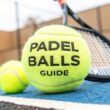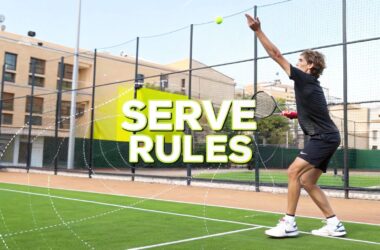If you're just getting into paddle tennis, you've probably noticed it's a unique blend of a few different racket sports. The rules are designed for one thing: fast-paced, rally-heavy games that mix the familiar scoring of tennis with the all-angles action of squash. At its heart, it's about the underhand serve, scoring in 15, 30, and 40, and the game-changing rule that lets you play the ball off the glass walls after it bounces. This combination is what makes paddle so easy to pick up, yet so tricky to master.
Decoding the Spirit of the Game
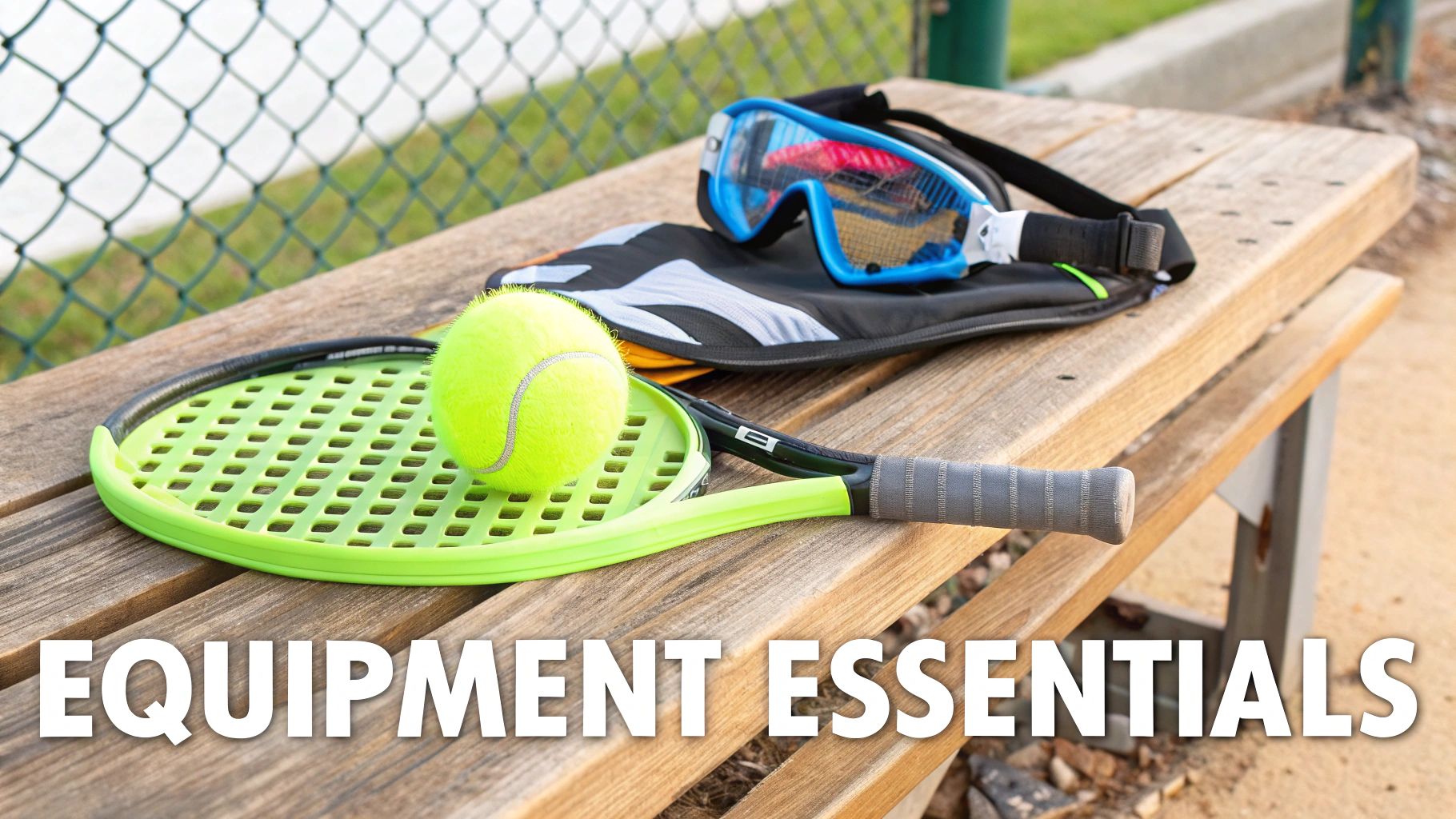
Before diving into the nitty-gritty of every rule, it helps to get a feel for the game's core philosophy. Don't think of it as mini-tennis. It's more like a hybrid sport that cherry-picks the best parts of tennis and squash. The goal isn't just to whack the ball over the net; it's to outsmart your opponents in a glass box where the walls are your best friends.
The whole rulebook is built around one central idea: keeping the rally going. This is what makes the game so addictive, and it’s achieved through a few key principles that define how paddle is played.
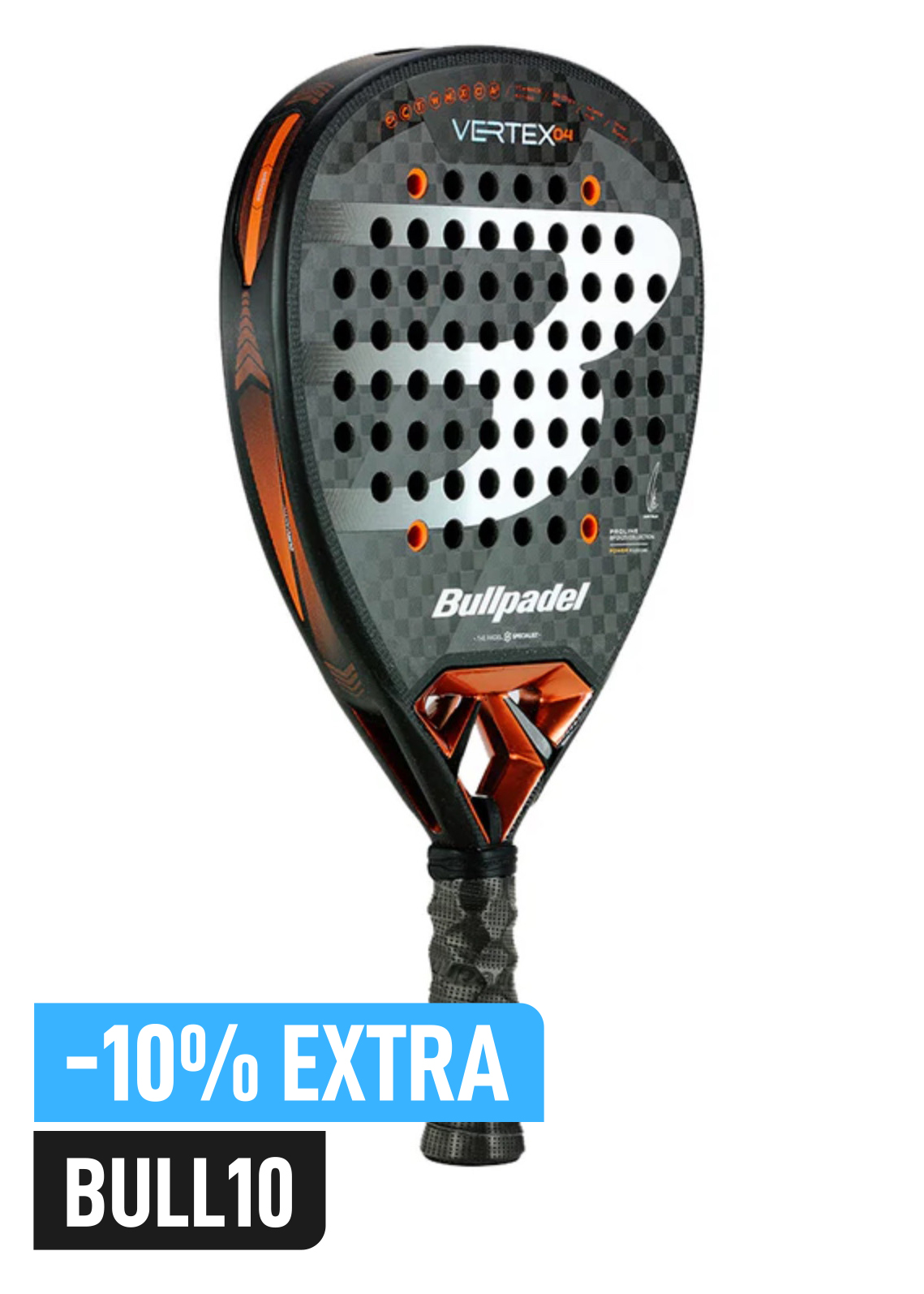
Buy the best padel gear to level up your next game!
CHECK OUT this deal from Padel Market!Get ready to take your game to the next level with the latest padel gear from Padel Market! Fast EU and Worldwide Shipping
- It's a Team Sport: Unlike tennis, where raw power can dominate singles, paddle is almost exclusively a doubles game. You live and die by your teamwork, court positioning, and constant communication with your partner.
- Power Isn't Everything: The gear is intentionally designed to keep the game's speed in check. Paddles are solid with no strings, and the balls have a bit less bounce than a tennis ball. This makes it tough to hit blistering winners, forcing players to rely on strategy and shot placement instead.
- The Walls Are in Play: That glass enclosure isn't just there to keep the ball from flying away. It's a fundamental part of the game. Learning how to use the back and side walls to your advantage—both for defense and attack—is what separates beginners from seasoned players.
Why the Rules Are Structured This Way
Once you understand why a rule exists, it’s a lot easier to remember. Take the serve, for example. The mandatory underhand serve is there for a reason. It prevents the game from becoming a serve-fest like you sometimes see in tennis. This one rule practically guarantees that every point kicks off with a real rally, getting all four players moving from the get-go.
The same logic applies to playing off the walls. A ball that bounces on the court first and then hits a wall is live. This keeps points alive and creates some spectacular, scrambling saves. But if you smash the ball directly into your opponent's wall without it bouncing? That's out. This simple distinction keeps the game tactical instead of just a chaotic pinball match.
The essence of paddle tennis is continuity. The rules are intentionally crafted to keep the ball in play, rewarding strategy, patience, and teamwork over sheer force. This philosophy makes the sport both incredibly fun for beginners and deeply strategic for advanced players.
Building Your Foundation
As we get into the specifics of court dimensions, scoring, and faults, just keep these core ideas in mind. Every rule is just a piece of the puzzle, supporting the game's unique character.
Knowing the court is small, the paddle is solid, and the walls are fair game gives context to everything else. It explains why a foot fault is such a big deal on a tight court and why you absolutely have to know which wall rebounds are legal. With this foundation, you’re not just memorizing the rules of paddle tennis—you're understanding a system designed for pure fun and competition.
The Court and Equipment Specifications
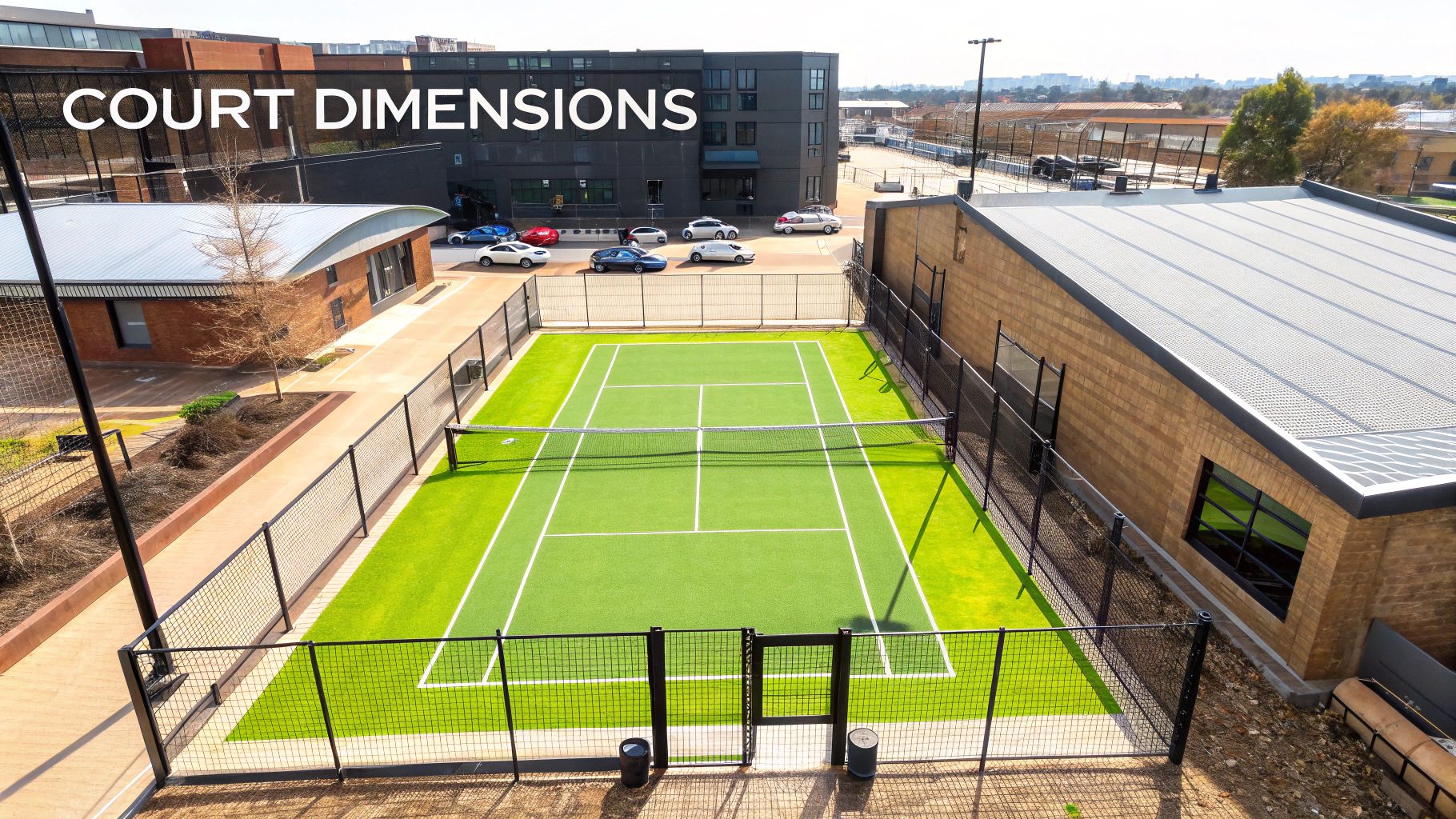
Before you can really get a feel for the rules of paddle tennis, you have to understand the arena itself. The court isn't just a set of lines on the ground; it's an active player in every single rally. Its one-of-a-kind design shapes the strategy, the movement, and the entire flow of the game.
The standard paddle tennis court is a rectangle measuring 20 meters long by 10 meters wide. Picture a tennis court that’s been scaled down and dropped inside a big glass box. This enclosure is the secret sauce, giving the sport its signature mix of tennis and squash.
A net splits the court down the middle, sitting 88 centimeters high at the center and rising to 92 centimeters at the posts. Running parallel to the net on each side are the service lines, which mark out the service boxes—the starting blocks for every point.
The Walls: A Tactical Playground
The walls are hands-down the most distinct feature of a padel court and a huge part of the game. Getting a handle on how they work is key for both attacking and defending. The back walls are usually 3-meter-high tempered glass, while the sides are a combination of glass and metal mesh.
This setup isn't just for looks. It creates a wild, dynamic environment where a point that looks totally lost can be flipped into a winning shot.
- Glass Walls: These give you a clean, predictable bounce. That means you can confidently play the ball off your own back glass to return a deep shot from your opponent.
- Mesh Fencing: The wire mesh on the sides is a different beast altogether. It gives a funky, deadened rebound. A ball hitting the mesh tends to die quickly, which makes it a tough shot to get back and a sneaky target for experienced players.
The genius of this design goes back to the game's roots. It all started in 1969 when Enrique Corcuera built a smaller court in Acapulco, Mexico, and surrounded it with walls. This simple change allowed the ball to rebound, blending tennis with squash and creating the 20×10 meter court that encourages longer, more strategic rallies. If you're curious, you can find more tidbits about the history of padel and its court online.
The Paddle and Ball
The gear in paddle tennis is built specifically for this rally-heavy game. Forget tennis racquets; padel paddles are stringless, made with a foam core and a face of carbon fiber or fiberglass.
The official rules have some strict limits on the paddle's size and materials:
- Maximum Length: 45.5 centimeters
- Maximum Width: 26 centimeters
- Maximum Thickness: 38 millimeters
- Safety Feature: A non-elastic wrist strap is a must-have. You have to wear it at all times to keep the paddle from flying loose during a wild swing.
A classic rookie mistake is swinging the paddle like a tennis racquet. Because it's a solid piece of gear, it's all about a short, punchy motion—more of a block or a push. Nailing this control-first approach is the secret to placing your shots perfectly.
Finally, the ball. It looks just like a regular tennis ball, but it has slightly less internal pressure. This small tweak makes a huge difference, as the lower pressure means the ball doesn't bounce as high. It’s a deliberate choice designed to slow the game down just enough to encourage those epic rallies and give players time to use the walls.

Buy the best padel gear to level up your next game!
CHECK OUT this deal from Padel Market!Get ready to take your game to the next level with the latest padel gear from Padel Market! Fast EU and Worldwide Shipping
Mastering the Scoring System Step by Step
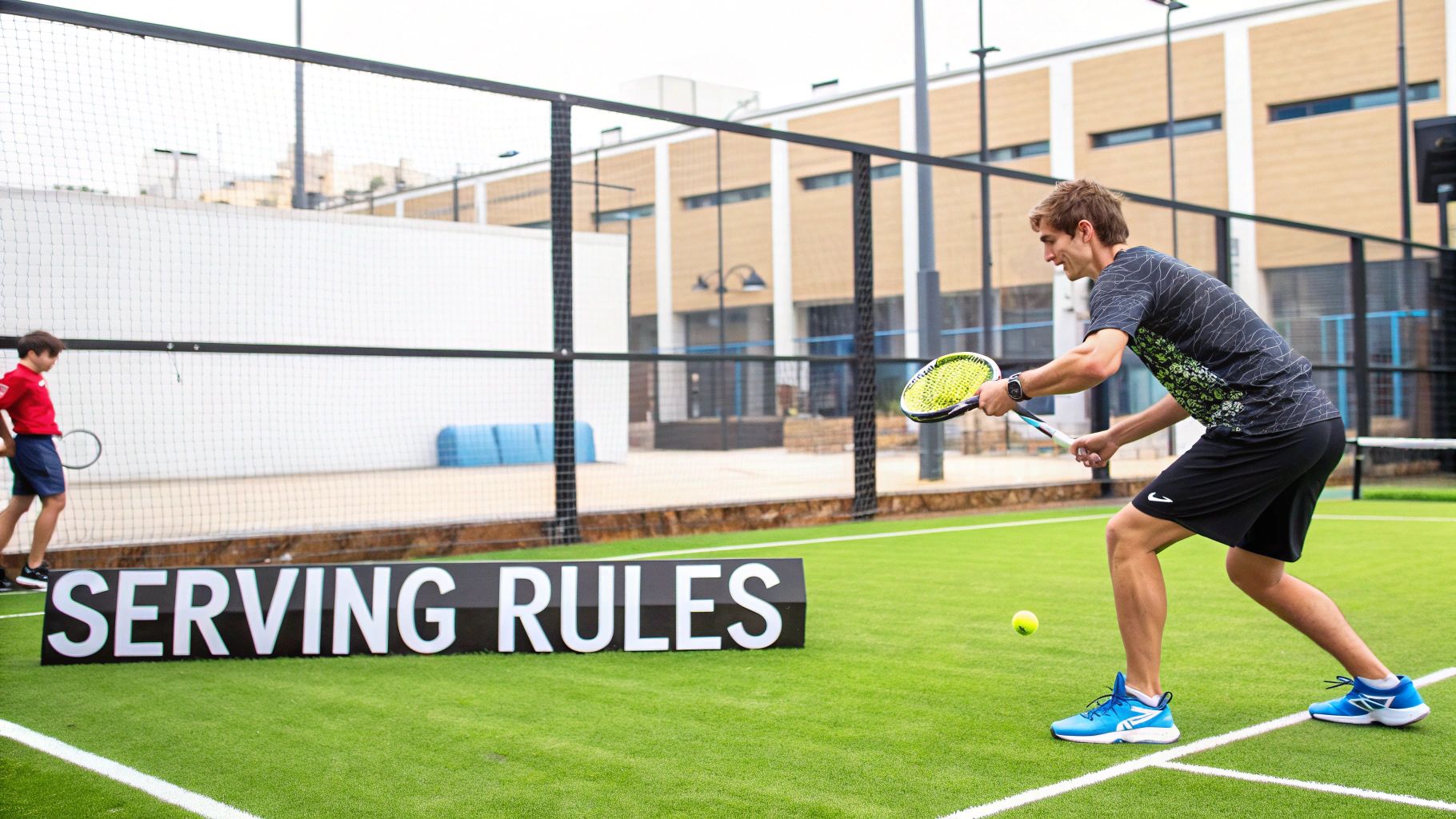
If you’ve ever watched a tennis match, you're already halfway there. The scoring in paddle tennis is practically a carbon copy, which is fantastic news for anyone just picking up a paddle. Instead of a simple 1-2-3 count, the game uses a unique sequence that makes every point feel like a big deal.
Think of it like building blocks. You win points to capture a game. You stack up enough games to take a set. And winning the majority of sets earns you the match. Let's break down how it all works, starting from the ground up.
From Love to Game: The Basics of Scoring Points
Every single game starts at zero-zero, or as it’s known in the racquet world, "Love-all." From that point on, the scoring has a rhythm you'll pick up in no time. The server's score is always announced first.
- Winning the first point gets you to 15.
- Winning the second point takes you to 30.
- Winning the third point brings you to 40.
- And winning the fourth point wins you the Game.
So, if the serving team wins the first rally, you'll hear the score called as "15-Love." If the receivers fire back and win the next point, the score evens out to "15-all." Simple enough, right? The first team to win four points wins the game, but there's a catch: you have to win by at least two points.
This is where things get interesting. If both teams are tied with three points each, the score is 40-40, which is called "Deuce." To win from deuce, you have to score two points in a row. Winning the first point gives your team the "Advantage." If you win the next point, you've won the game. But if you lose it, the score snaps right back to deuce.
Winning Sets and Matches
Once you've won a game, you're one step closer to winning the set. The first team to win six games takes the set, but that two-point rule still applies. You must win by a margin of at least two games. A score of 6-4 is a perfectly good set win, but 6-5 is not—the match continues.
If the score gets tied at 6-6, you head into a tiebreak to decide the winner of the set. This system keeps things competitive, whether you're watching pros or just playing at a local club. The official rules of paddle tennis have kept this scoring consistent for years, making the game easy to follow everywhere.
To help you visualize how it all comes together, here's a quick breakdown of the scoring flow.
Paddle Tennis Scoring Progression
This table shows how points build into games, and games into sets, giving you a clear picture of the path to victory.
| Unit | How to Score It | How to Win It |
|---|---|---|
| Point | Winning a single rally. | Scored as 15, 30, 40. |
| Game | Winning at least four points. | Must win by a two-point margin. |
| Set | Winning at least six games. | Must win by a two-game margin (e.g., 6-4). |
| Match | Winning the majority of sets. | Typically best-of-three sets. |
With this structure, every point carries weight, building tension from the first serve to the final set point.
The Tiebreak Explained
The tiebreak is where nerves are truly tested. When a set hits a 6-6 deadlock, this special game kicks in. The familiar 15-30-40 scoring is tossed out the window and replaced with a straightforward one, two, three count. The first team to get to seven points—again, winning by at least two—wins the tiebreak and takes the set with a final score of 7-6.
The serving pattern also switches up. The player who was next in line to serve starts the tiebreak, serving just one point from the right side of the court. After that single point, the serve flips to the other team for the next two points, starting from their left side. This two-point serving rotation continues until a winner is decided. It's a high-stakes shootout that makes for some of the most exciting moments in the game.
The Serve Rules and Common Faults
In padel, the serve is the one moment where you have total, quiet control. It kicks off every single point, and nailing it down is non-negotiable if you want to play by the rules of paddle tennis. But forget what you know about blistering tennis serves—the padel serve is all about placement and precision, not raw power. That’s by design.
Think of the serve as a gentleman's agreement to start a rally. It’s structured to get the ball in play fairly, giving the returner a real chance to engage and spark an exciting point. This all boils down to the most critical rule of them all: you absolutely must serve underhand.
The Underhand Serve Requirement
The single most defining rule of the padel serve is that you must make contact with the ball at or below your waist. There's no getting around this. It's the great equalizer of the game, preventing anyone from starting the point with a monstrous overhead smash.
To pull off a legal serve, you also have to let the ball bounce once behind the service line before you hit it. You can't just toss it up and whack it out of the air. This one-two punch—a bounce followed by an underhand swing—creates the unique, controlled rhythm of the padel serve.
This underhand rule is what keeps padel so accessible and strategic. It ensures rallies are built on teamwork and clever shots, not just one overpowering serve. It’s a core principle that keeps the game flowing.
Positioning and Placement on the Court
Where you stand is just as important as how you swing. You have to be positioned behind the service line, which is the line at the very back of the court. For the first point of every game, you’ll serve from the right-hand side. After that, you just alternate sides with each new point.
Your target is always the service box diagonally across the net. A few things have to happen for it to be a good serve:
- Target Area: The ball has to land cleanly inside the service box diagonally opposite you.
- Clear the Net: The serve needs to go over the net without touching it.
- Avoid the Fence: The ball cannot hit the side wire mesh fence before its first bounce. Hitting the back glass wall after a good bounce, however, is perfectly legal and often a great tactic.
This visual breaks down how the score progression tells you which side to serve from.
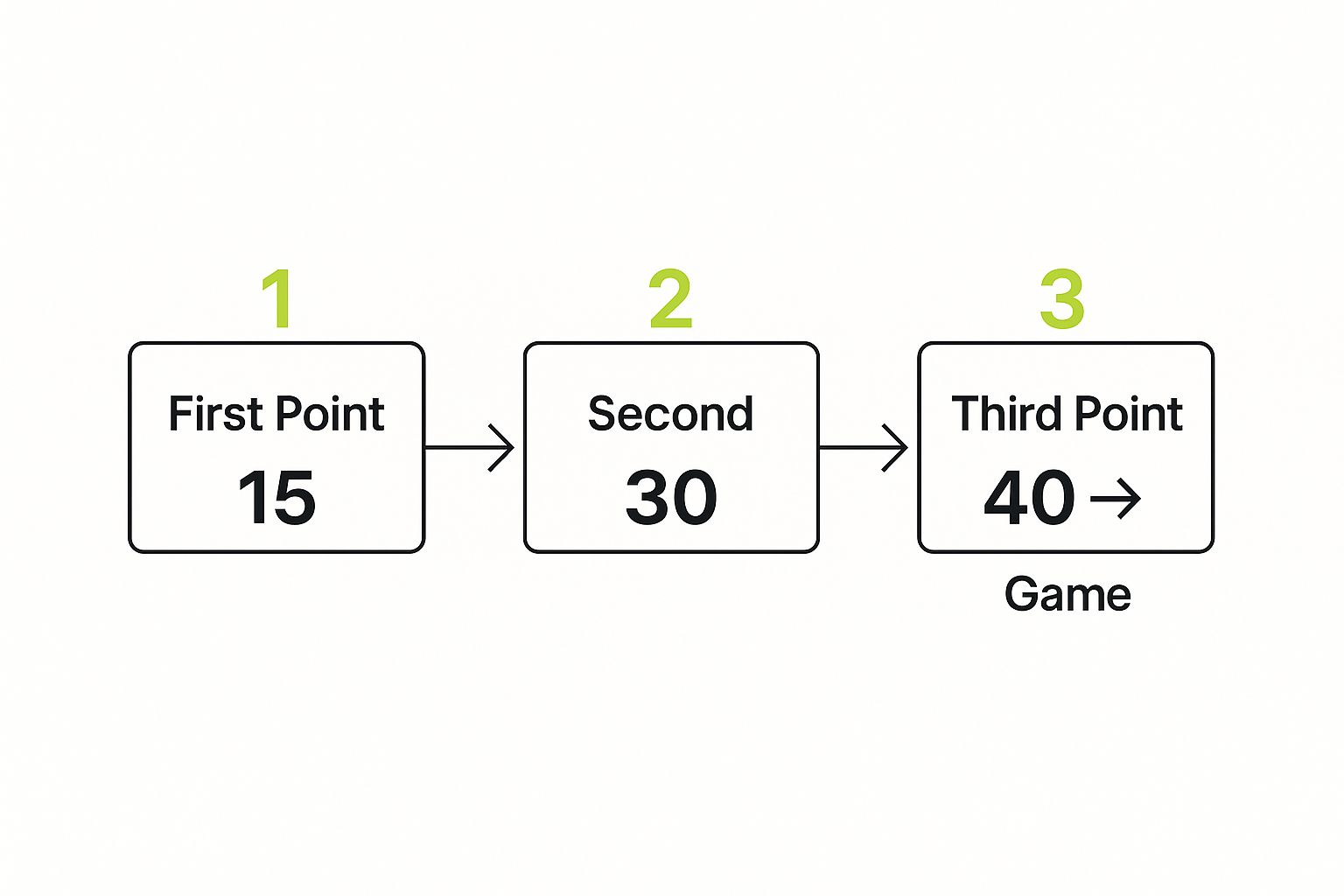
As you can see, once the score is "15," you switch over to the left side of the court for your next serve, still aiming for that diagonal box.
Understanding Service Faults
A "fault" is just the term for breaking any of the service rules. Much like in tennis, you get two cracks at it. If you fault on your first attempt, no big deal—you just take your second serve. But if you fault on that second try, that's a "double fault," and you lose the point.
Here are the most common ways players fault on the serve:
- Foot Fault: This is a classic. It happens when you step on or cross the service line with either foot before your paddle makes contact with the ball. Both feet need to stay put behind that line until you've hit the serve.
- Missed Ball: If you swing with the intent to serve but whiff it completely, that counts as a fault.
- Wrong Box: The serve lands anywhere but the correct service box. Hitting the line is out, and so is hitting the side wall or center line before the bounce.
- Hitting the Net: If the ball clips the net and then lands outside the proper service box, it’s a fault.
For a really granular look at every possible scenario, including lets and other tricky situations, check out this guide on padel serve rules. It's a fantastic resource for truly mastering this part of the game.
What Is a Let
A "let" is basically a do-over. It’s not a fault, and it means the server gets to replay the entire serve attempt. It doesn’t matter if it was their first or second serve—they get to start again with a fresh first serve.
A let is only called in one specific situation: the ball hits the net but still lands in the correct service box. If it hits the net and lands out, it’s a fault. This rule keeps things fair when an otherwise perfect serve gets slightly deflected. Getting these little distinctions right is key to building a reliable, legal serve.
Navigating Rallies and Wall Play Regulations
Once the serve is successfully in, the real fun begins. Rallies are the heart and soul of paddle tennis—a fast-paced exchange where strategy, quick reflexes, and teamwork all come together. The basic rule that keeps everything moving is simple: the ball can only bounce once on your side before you have to hit it back over the net.
If the ball bounces twice, you lose the point. Same goes if your shot doesn't make it over the net or lands out of bounds. This core idea keeps the game flowing, but it's the walls that add a brilliant layer of complexity, turning the court into something like a three-dimensional chess match.
Understanding Legal Wall Play
The walls aren't just there to keep the ball from flying away; they're your best friends. Learning how to use them is what separates beginners from experienced players. The single most important rule to burn into your brain is the sequence: for a shot off the wall to be legal, the ball must always hit the ground first.
Picture this: your opponent smacks a deep shot that lands near the back of your court. Instead of lunging for an awkward return, you can let it bounce once, come off the back glass, and then play your shot. This is a perfectly legal move and a cornerstone of solid defense in paddle tennis.
The core principle of wall play is simple: Ground, then Glass. As long as the ball bounces on your side before touching any wall, it remains in play. This simple rule opens up a world of creative defensive saves and offensive setups.
On the flip side, if an opponent's shot drills one of your walls or the fence before it bounces on your side of the court, they've made an error and you win the point. This is a key difference in the rules of paddle tennis that sets it apart from sports like squash or racquetball, where you can just blast the ball off any surface.
Common Wall Play Scenarios
Out on the court, points unfold in a split second, so knowing the specific rules for different wall situations is crucial. Padel's unique court design, a blend of tennis and squash elements, led to its own set of rules over the years. These rules evolved to fit the game's high speed and smaller court size, creating situations you just don't see in other racket sports. If you're curious about the history, the Platform Tennis Hall of Fame website has some great insights into how these sports developed.
Here’s a quick rundown of the most common situations you'll encounter with the walls:
- Returning Off Your Own Back Wall: This is the bread and butter of wall play. After the ball bounces, you can let it rebound off the back or side glass walls before you make your return. It buys you precious time.
- Hitting Your Own Glass to Return: Can you deliberately hit the ball into your own glass to get it over the net? You bet. This is a tricky, advanced shot known as a "contra pared" (counter wall) and can be a fantastic way to surprise your opponents.
- The Wall-Mesh Corner: What about when the ball hits that awkward corner where the glass meets the metal fence? If it lands in the "crease" after bouncing on the court, it's still in play. The rebound will be totally unpredictable, but the rally continues!
Legal vs. Illegal Wall Hits During a Rally
Things can get confusing in the heat of a rally. This quick-reference table breaks down what's allowed and what's not when playing the ball off the walls.
| Scenario | Is It Legal? | Explanation |
|---|---|---|
| Ball bounces, then hits back glass. | Yes | This is a standard defensive play. The ball is live after rebounding from the wall. |
| Opponent's shot hits your wall directly. | No | If the ball doesn't bounce on your court first, your opponent loses the point. |
| You hit the ball into your own glass. | Yes | Hitting your own wall to send the ball over the net is a legal, strategic shot. |
| Ball bounces, hits a corner or "crease." | Yes | The point continues, even if the rebound is unpredictable. |
| You hit the ball directly into the mesh. | No | You lose the point if your shot hits the metal mesh on your side before going over. |
Once you truly get the hang of these rules, your whole approach to the game will change. You'll stop seeing the walls as a barrier and start seeing them as a tactical tool—a way to extend rallies, defend impossible shots, and turn a defensive scramble into a point-winning opportunity.
Frequently Asked Paddle Tennis Rules
Once you get the basics down, you’ll find certain situations pop up that can make even experienced players pause and scratch their heads. The rules of paddle tennis have some tricky nuances that often spark a friendly debate on the court. This section is your go-to guide for clearing up those confusing moments so you can settle disputes and get back to playing.
Think of these as the questions that come up mid-rally, answered simply and directly. Nailing down these specific scenarios will give you a much deeper feel for the game's logic.
Can I Hit an Opponent with the Ball?
Yes, you can. Hitting an opponent with the ball during a live point is perfectly legal, and you win the point. This is usually called a "body shot." But there’s a big difference between a smart tactical move and just being a bad sport.
Aiming for an opponent’s torso or legs when they're stuck at the net is a pretty common way to end a point quickly. However, deliberately aiming for someone's head or face is considered dangerous and goes against the spirit of the game. In any casual match, it’s just good etiquette to say sorry if you accidentally hit someone, especially if it was a hard shot. The rules allow it, but respect and safety should always come first.
What Happens If the Ball Hits a Line?
Just like in tennis, if the ball touches any part of any line, it’s considered "in." This goes for all lines on the court—the service lines, the center line, and the boundary lines marking the playing area.
In friendly games without an umpire, the honor system is everything. The players on the side where the ball landed should make the call. If you're even a little bit unsure, the unwritten rule of fair play is to give the point to your opponent.
Can My Paddle Cross the Net?
Generally, no. You can't let your paddle, hand, or any part of your body cross over the net to hit the ball. If you do, you lose the point immediately. The net is a strict boundary you have to respect during play.
But there is one very specific exception. If the ball lands on your side, but then bounces back over to your opponent's side because of some crazy spin or a gust of wind, you are allowed to reach over the net to play it. This is the only time it’s okay to cross that plane. Just make sure you don't actually touch the net with your paddle or body in the process.
Padel vs Platform Tennis Is There a Difference?
Yes, and it’s a big one! They are completely different sports, even though the names sound similar and they look a bit alike at a glance. It's a common point of confusion, but the courts, equipment, and rules are totally distinct.
- Padel: This is played on a solid court enclosed by glass and mesh walls that are part of the game. All serves have to be underhand after one bounce.
- Platform Tennis: This is played on a raised, often heated, deck surrounded by wire-mesh screens. The serve can be overhand, and the ball itself is different.
While this guide is all about padel, you can get a much deeper breakdown in our complete overview of the rules of paddle tennis. Understanding what makes them different really helps clarify why certain rules, like the underhand serve, are so crucial to our game.
At Padel Rumors, we've got everything you need to master the game, from in-depth rule guides to expert gear reviews. Whether you're a beginner just learning the ropes or a seasoned player looking for an edge, we've got you covered. Check out our resources and join a global community of padel enthusiasts today! Find out more at https://padelrumors.pages.dev.


